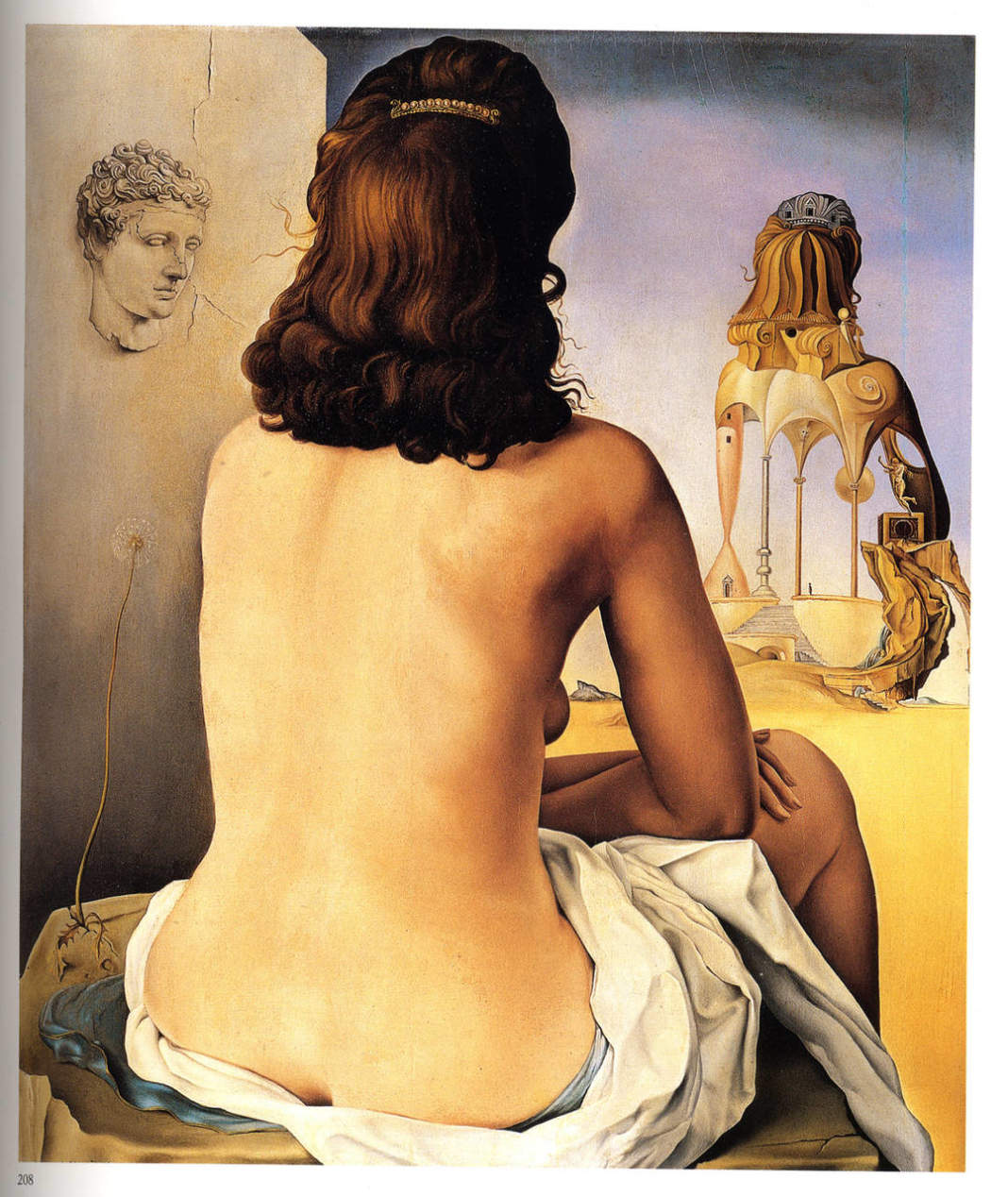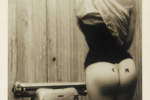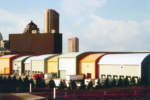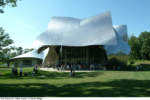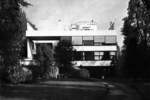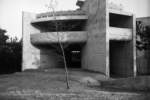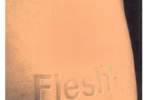Building from behind: Architecture and the aesthetics of dorsality.
Beauty? Yes, by all means [si, certo, ma…], but from which angle? In addition to who or what is being looked at, one has to reconsider the aspect from which the objects of our desire turn beautiful. While the formal strategies of inverting diagrams and building volumes from upside down to inside out have been assiduously employed in modern and contemporary design practices, the process of turning or looking back — exchanging frontal with rear aspects — has remained essentially taboo throughout the revolutions of twentieth-century architecture.
This lack of versatility corresponds to a certain inflexibility on the part of architectural criticism, whose meager contributions to the depreciated subjects of architectural beauty and aesthetics remain largely one-sided in their exclusive attention to frontality. If through optical analogies with x-ray photography modern architecture became increasingly invested in making visible the interior structure of a building—forcing the building to wear, so to speak, its entrails all around its face—it never really overturned the traditional hierarchy between front and back: everything was plainly visible on the façade, which now expanded its dominance to all other elements of the structure, including those that were formerly hidden.
For example, in The Face of the German House (Das Gesicht des Deutschen Hauses), the German architect and anti-modernist critic Paul Schultze-Naumburg used photographs of the back of workers’ houses to demonstrate the entirely “unplanned” and labyrinthine side of architecture in the context of the modern city.1 These rear surfaces, normally unseen by the public eye and yet exposed by the critic’s camera disclosed everything that was ugly and embarrassingly private. Schultze-Naumburg used those negative examples to create visual parallels with modern architecture, including the recently completed buildings by Le Corbusier and Hans Scharoun for the Weissenhof colony (1927) near Stuttgart, which were as plain and undecorated as the back of city buildings. These ‘modern houses’ lacked not only a face but even a head; they were essentially decapitated since they were no longer crowned by the “pitched roof” which was the trademark of German national identity. It was as if the anonymity of the back had now colonized all other aspects of the building. The omnipresence of the dorsal aspect and the loss of the traditional façade reverberated a widespread cultural anxiety about ‘losing face’—a form of crisis provoked by the elimination of a stable identity whose psychological effects were magnified in periods of socio-political upheaval.
The architectural discussion of dorsality unfolded parallel to a general interwar discourse on the affects of cultural and psychological regression, the main side-effects of which were visible on the human body. In Civilization and its Discontents, Sigmund Freud argued that one of the primary consequences of the assumption of the erect posture by early humans was the “organic repression” of anal eroticism and the feelings of guilt surrounding the frontal exposure of the genitals. Suddenly human frontality became obscene, while dorsality turned into an object of repression. Echoing the theories of Freud as well as those by contemporary physiomorphologists in his posthumously published essay Le Jesuve, George Bataille speculated that following the obfuscation of the erect ape-humans’ protruding anuses (“dazzlingly colored excremental skulls”) inside the fleshly protuberances of the buttocks, all means of erotic and social attraction were elevated to the apertures of the face, whose tearful eyes and smiling mouth became the new loci of human expression.
If for Bataille man is no more than the “intermediary development between the monkey and the building,” then the veneration of the face and the repression of all dorsal aspects act as cornerstones in architecture’s discursive foundation. Traces of the ambivalent status of the human posterior, surrounded by both veneration and guilt, are manifested in the psychoanalytically informed art and (hypothetical) architecture of the surrealists. Salvador Dalí would compose hymns to the back of his companion Gala and, following the model of Man Ray, would immortalize her “beautiful behind” in a series of images, including a painting made in 1945, in which Gala transforms into an anthropomorphic temple supported by a monumental spine and architectural vertebrae, crowned by hairy scrolls, and accessed by a rear entrance. Around the same period in Italy, Carlo Molino would create his own photographic assemblages of live female models and architectural objects with an excessive attention to the rear aspects of female anatomy. What we perhaps witness in these pictorial experiments by Dalí and Molino is not simply the architectural potential of the human body’s other side, but more importantly, the reverse side of anthropomorphic mentality in architecture. All analogies between architectural structures and bodily cavities, which were essentially suppressed by humanist iterations of the Vitruvian figure, reemerge in these eroticized tectonic models. However crude, Dalí’s monumental exposure of the back signifies that the essential mode of looking at an object of desire is indeed from behind—the state in which the subject remains fully open by refusing to disclose any of its enigmatic properties.
Preceding Dalí’s rear accessed anthropomorphic pavilions are the buildings of Le Corbusier, the very houses castigated by Scultze-Naumburg as “unobjective,” which disclose a more intricate relation between front and back. As analyzed for example by Colin Rowe and Robert Slutzky, the 1926 Villa Stein at Garches confronts the visitor with a quasi-hermetic façade suffused by the equivocality of a service access, while the back of the building opens up to the landscape.
As in the contemporary houses of Adolf Loos, Corbusier’s villas face the visitor by showing their back; they reverse their private parts into the public to broadcast a privatized notion of publicity. A more ambiguous reversal occurs in Rowe’s and Slutzky’s final example, Corbusier’s design for the Palace for the League of Nations in Geneva (1928), in which an imaginary visitor becomes creatively disoriented by projecting the back of the building in several of its access points. The atavistic aspects of this unrealized design by Corbusier (also an admirer of robust female buttocks) questions not only the very logic of frontality, but also the centrality of the phenomenological subject, who, in his “literal” bewilderment becomes “phenomenally” decentered. It might then sound ironic that the ostensible resolution of such formal perturbations was the reemergence of the circular or concentric model — a building with an ‘all-around’ sculptural approach that seemed to undermine any distinctions between front and back viewing. Specimens of that type would be the well-known villa Spezzotti by Marcello d’Olivo (1957) or the quasi-rotational (both on a horizontal and vertical axis) composition of Corbusier’s cathedral at Ronchamps (1954). Aided by their free placement in a landscape, the buildings of this type represent a form of architectural serpentinism, analogous to that in painting and sculpture, as they strive to display all of their aspects in a single image. But even the buildings that are imbedded within a dense city fabric, such as Gio Ponti’s Pirelli Tower in Milan, display an identical front and back — a ‘closed’ equanimity of form which renders them autonomous from (and yet highly reflective of) the urban context. At this point dorsality migrates from the personal realm to that of the civic environment; it embodies the paradox of an anonymous identity which is in fact synonymous with the mute transparency or silent physiognomy of corporate architecture. Perhaps a second ‘ironic’ turn occured during the interlude of postmodernism in the architecture of the late 1970s and early 80s. The quasi neoclassical facades of corporate buildings by Michael Graves and Philip Johnson signal a return to an iconic frontality.
It is as if architecture turns its back to its modernist past, and yet it does so by wearing a mask — a reversible ornamental surface — that makes impossible to decipher which aspect of the building one really looks at. The logic of the reversible mask ostensibly extends to the highly sculptural buildings of the last two decades, which, similar to the ‘all-around’ buildings of the 1950s, ostensibly undermine distinctions between front and back in favor of a rhythmic continuity. However buildings, such as Frank Gehry’s Fisher Center for the Performing Arts in Bard College (2003), display a marked difference between front and back. Gehry’s elaborately sculptural metal façade is in total contrast to the concrete back of the building that has the appearance of a service entrance in a commercial chain department store. Completed ten years earlier, Peter Eisenman’s Colombus Convention Center in Ohio (1993)—a building distinguished by its intricate ‘folding’ plan and publicized in architectural journals mainly via photographic views from above—includes a series of window-less facades that deliberately simulate the blind “back” of buildings, reminiscent of the irregular side-surfaces criticized by Schultze-Naumburg in the 1920s. However different, both of these recent examples recognize the back as ‘back’—and in the case of Eisenman such (mis)recognition envelops the front of the building. This is a back that is fully exposed and fully demythologized from the enigmatic qualities attributed to it by the surrealists, and yet whose powers of seduction rely once again on its nudity.Perhaps a more provocative use of the behind is in the discursive architecture of Diller and Scofidio, and here the evidence is not a building but a book. Their 1994 compilation of texts and projects Flesh bears on the cover the composite image of a female and a male buttock, with the rift situated on the book’s spine. We access the book from the back—the cover creates a rear entrance for the reader. The first article written by the architects starts with an exhaustive legal definition of the area of the buttocks in an ordinance against public exposure by the State of Florida. The text is illustrated by a pair of buttocks in shiny polyester ‘hot-pants’ followed (in the next page) by a quartet of images showing in graphic detail a surgical procedure of buttock enhancement with silicone implants.
This is the new artificial behind presaging a series of alternative anthropomorphic analogies between human technology and architecture. Perhaps this form of prosthesis speaks allegorically for the injection of irony that contemporary architectural discourse needs in order to restore its orientation, including a regressive one. Turning back or looking (from or at the) back is a way of exposing institutionalized mentalities and stale methodological principles—learning to approach the matter of architecture from a different angle. And is not that what beauty, including that of buildings, could be all about?


